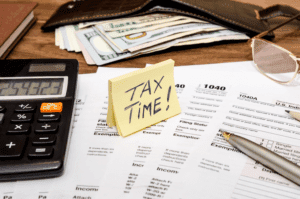
Sometimes, an investor who wishes a low-risk investment will accept the lower priced dividends. Usually, investors will do this as long as they know they will receive payments and will be a priority if the company assets are ever liquidated. Non-cumulative dividends do https://www.mlauda.com/purchase-ledger-vs-sales-ledger-what-s-the/ not have unpaid dividends carried over from previous years.
Table of Contents
- Cumulative preferred stocks are stocks that are entitled to get all the missed unpaid dividends, as the shareholders are promised a fixed amount whenever the dividends are declared.
- As an investor, it’s important to know when you can expect dividends to be paid.
- The discounted pricing can make these securities more attractive to certain investors who are willing to take on higher risk.
- If a company fails to pay dividends in previous years, cumulative shareholders can claim these arrears, making your investment in cumulative shares potentially more lucrative.
- For instance, if the business has a bad year and can’t afford to give money to shareholders, it just skips the payout.
This model aims to determine the present value of all future dividends that the investor can expect from holding the stock. This cumulative effect makes cumulative dividends unique from regular dividends on common shares. Companies are not legally obligated to pay common stock dividends, whereas cumulative preferred dividends must be paid before others according to the contractual terms between shareholders and the company. The compounding aspect causes unpaid noncumulative dividends cumulative dividends to grow perpetually over time until they are paid off. Stay Informed of Market TrendsMarket trends and economic indicators can influence the demand for noncumulative preferred stocks and impact their yields.
Corporate Governance
- Instead, investors receive only the current year’s dividend payment or none at all if the firm fails to distribute dividends that year.
- In a non-cumulative preferred, if a company skips a dividend payment, they permanently forfeit it.
- There is not much assurance in the investment of non-cumulative preferred stocks.
- In that year, the company will be obliged to pay both the missed 5% dividend from the year.
If due for any reason, the company cannot pay the dividend within the pre-decided date, then the dividend gets accumulated and is paid in the future. Specific conditions must be met for a company’s creditors to legally suspend dividend payments. The noncumulative preference shareholders hold no right to claim any unpaid dividends in subsequent years. Instead, they get a fixed dividend out of each year’s profits if the company fails to declare the dividend. Investors are more willing to purchase cumulative preferred stock, since they have a greater likelihood of being paid dividends.
They don’t have to pay omitted dividends

Non-cumulative dividends refer to a stock that doesn’t pay the investor any dividends that are omitted or unpaid. Dividends are payments made to shareholders and can be preferred or common. Preferred refers to stock that is paid before common stockholders, and it has a more predictable income. The terms “cumulative” and “noncumulative” describe different rules corporations use to pay dividends on Record Keeping for Small Business preferred stock.
Company XYZ announces dividends of $3.50/share to be paid in 2017, 2018, and 2019. – Can cause dissatisfaction among shareholders expecting regular dividends. The missed dividend is gone for good and won’t pile up for future payments. Discover the essentials of Regulation S, the SEC’s framework for governing securities offers and sales outside the U.S. without registration under the Securities Act of 1933. This comprehensive guide details key rules, definitions, and compliance requirements, including offshore transactions, distribution compliance periods, and restrictions on U.S. market activities. Perfect for issuers, distributors, and investors navigating international securities markets.
- Generally, noncumulative preferred stock is not common in the stock market.
- Additionally, blue-chip stocks often pay dividends, making them a good choice for those looking for a steady growth rate.
- Additionally, in times of financial distress, the company may prioritize other obligations, leaving noncumulative shareholders without returns.
- Common stockholders, on the other hand, reap the benefits of a company’s growth through increased stock value and potential voting power.
- If a dividend is sharing company profits to shareholders, then a cumulative dividend is a distribution made to the holders of special “preferred” shares regularly.
- A corporation may issue 100 thousand shares of noncumulative preferred stock for $5 each on 1st January.
Cumulative and non-cumulative stocks are two types of stock options available to shareholders. While the former makes it mandatory for firms to pay off the dividends when accumulated, the latter keeps the firms off from the obligation of mandatory payment of dividends to shareholders. Any arrears would not accumulate for the future in case of noncumulative preference shares (stock) and thus would not be able to claim it, thereby leading to no obligation on the issuing company.

Joint Ventures in Florida: Legal Definition, Five-Factor Test, and Key Business Risks
So cumulative dividends provide an extra level of security for preferred shareholders – they have seniority in receiving dividend payments. Assume ABC Company with 1000, 5%, $100 par value noncumulative preferred stocks outstanding issued a dividend. Noncumulative Preference Stocks are the stocks that are issued by the companies, but then the issuer may skip or decide not to pay the dividends to the shareholders any longer.

Dividend Preference
- When you’re raising a venture round using NVCA-style preferred stock documents, one term you’ll likely come across—but may gloss over—is dividends.
- Cumulative and non-cumulative stocks are two types of stock options available to shareholders.
- Investors must consider their financial objectives and risk tolerance before choosing between preferred stocks and corporate bonds.
- In short, the dividends that remain unpaid cannot be claimed by the expected recipients.
- It is the preferred stock of a corporation, and its holders are always paid first.
To understand this difference, it is essential to examine the definition of noncumulative preferred stock and compare it with cumulative preferred stock and common stock. The company’s board of directors can suspend dividend payments at any time without triggering legal consequences. However, in the event of a financial crisis, a company’s directors can suspend dividend payments to noncumulative preference stockholders. Because noncumulative preference shares have limited pay-outs and no liabilities, they provide flexibility for a company during times of financial hardship.


Companies must carefully weigh these pros and cons against their current financial situation, goals, and shareholder preferences. Such deliberation helps in determining which dividend policy aligns best with their strategic plans and promises the most beneficial outcomes for all parties involved. It puts the stakeholders in a position where they are uncertain about the payment of dividends and poses a financial risk. Even if the dividend is not paid for any reason, such as crisis or downfall, it will accumulate for a future date whenever declared.
For instance, let’s assume that Company XYZ is not able to pay dividends to its noncumulative preferred shareholder this year. The shareholders have no right to claim for the missed dividends in the future years. Also, the company has no obligation of paying the skipped dividends to the holders of noncumulative preferred stock in the future. However, in the case of cumulative preferred shareholders, the company has an obligation of ensuring that such shareholders receive all their pending dividends. The same shareholders have a right to claim any pending dividend payment the issuing company owes them.